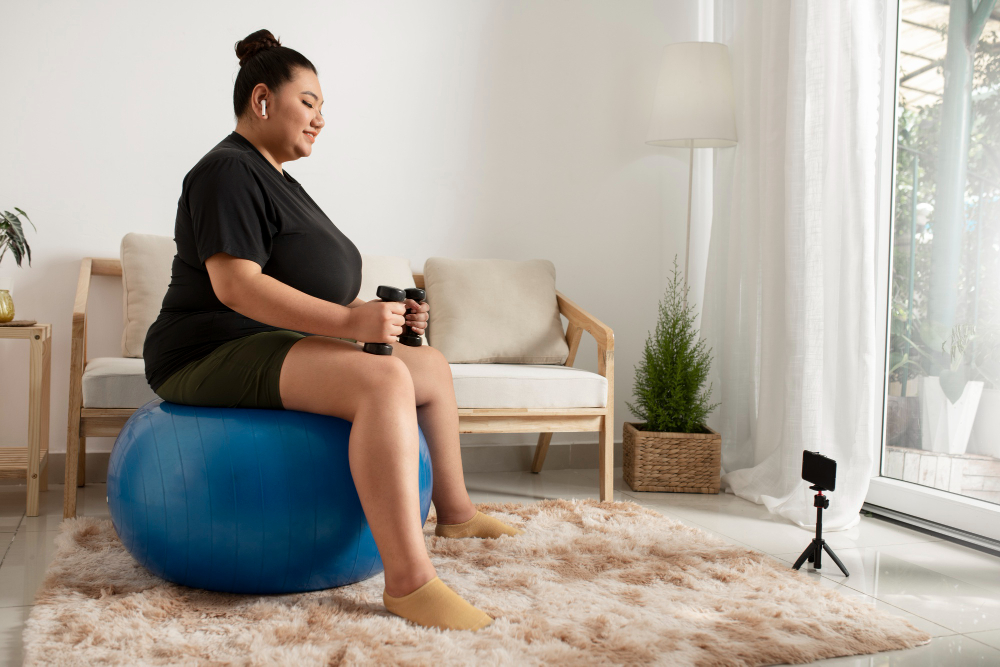Living With Lipedema: Understanding, Managing, and Finding Support

Lipedema is a condition that affects millions of women globally, yet it is often misunderstood and undiagnosed. It can significantly impact physical health, emotional well-being, and overall quality of life. But living with lipedema doesn't have to mean living in the shadows. The key to improving your day-to-day life lies in understanding the condition, adopting effective management strategies, and seeking the right support and treatment.
Whether you’re newly diagnosed, suspect you may have lipedema, or are simply looking for guidance, this guide will walk you through the essentials of living with lipedema, from recognizing symptoms to finding a lipedema treatment center.
What Is Lipedema?
Lipedema is a chronic condition that causes the abnormal accumulation of fat, typically in the lower body, such as the hips, thighs, and legs. Although it primarily affects women, some men may also experience it.
Unlike regular fat distribution, lipedema fat is resistant to diet and exercise, and the condition is often accompanied by pain, sensitivity, and swelling. Because of its unique features, lipedema is frequently misdiagnosed as obesity or lymphedema, leading to frustration and delayed treatment.
Common Symptoms of Lipedema
Recognizing the symptoms is the first step toward addressing the condition. Typical signs of lipedema include:
- Disproportionate fat distribution: Fat accumulates mostly in the legs, thighs, hips, or arms, creating an imbalanced appearance between the upper and lower body.
- Tenderness and pain: Affected areas are often painful or sensitive to touch, even without visible cause.
- Swelling: Legs and arms swell, particularly after standing or during hot weather.
- Bruising: Affected areas may bruise easily due to weakened capillaries.
- Resistance to weight loss: Regular dieting and exercise have no effect on lipedema fat.
If you notice these symptoms, you’re not alone, and help is available.
How to Manage Lipedema
Living with lipedema can be challenging, but proper management can improve your daily life. Here are actionable strategies to reduce discomfort and maintain mobility.
1. Adopt Specialized Treatments
Treatment for lipedema often includes both non-surgical and surgical options, all aimed at improving functionality and reducing symptoms.
- Non-Surgical Options
-
- Manual Lymphatic Drainage (MLD) therapy helps reduce swelling and improve lymphatic flow.
- Compression garments, like leggings and sleeves, minimize swelling by promoting better blood and lymphatic circulation.
- Exercise tailored for lipedema, such as swimming or low-impact activities, remains essential to avoid complications like muscle atrophy.
- Surgical Options
Lipomatic liposuction is a common surgical intervention that removes lipedema fat while preserving the lymphatic system. Discuss with a lipedema treatment center to see if this option is suitable for you.
2. Modify Diet and Nutrition Habits
Though diet alone cannot “cure” lipedema, adopting anti-inflammatory dietary approaches can alleviate symptoms. Focus on these principles:
- Limit refined carbs and sugars.
- Prioritize omega-fatty acids and whole foods.
- Stay hydrated and incorporate anti-inflammatory herbs and spices, like turmeric and ginger.
3. Seek Emotional Support
The effects of lipedema go beyond the physical. Many individuals feel isolated or misunderstood, so taking care of your mental health is vital.
- Join support groups or online communities to connect with others who understand your struggles.
- Consider therapy to process emotions and build self-confidence.
- Surround yourself with people who offer encouragement and understanding.
Why Early Diagnosis and Treatment Matter
Understanding lipedema early dramatically improves life quality. Delayed diagnosis often leads to advanced-stage lipedema, with worsening symptoms like immobility and severe pain. The earlier the condition is addressed, the easier it is to manage swelling, discomfort, and related complications.
Unfortunately, many women spend years without an accurate diagnosis. But awareness is growing, and specialized clinics such as Byrd Lipedema Treatment Center are helping change that.
Finding the Right Lipedema Care
Choosing the appropriate healthcare provider to help you manage lipedema is crucial. A specialized lipedema treatment center can provide a dedicated team of professionals who understand not only how to treat the condition but also how to support you holistically.
What to Look For in a Lipedema Treatment Center
- Expertise in diagnosing and managing lipedema.
- Access to cutting-edge treatments, including both therapy and surgical options.
- A patient-centered approach to create personalized treatment plans.
- Post-treatment support, including nutritional consultations, physical therapy, and community resources.
Why Choose Byrd Lipedema Treatment Center?
The Byrd Lipedema Treatment Center is committed to empowering those living with lipedema. Our blend of innovative approaches and compassionate care ensures every patient receives the best possible outcome.
What We Offer
- Comprehensive Diagnosis: We ensure accurate identification of lipedema to guide an effective treatment plan.
- Non-Surgical and Surgical Options tailored to your needs, including advanced liposuction techniques.
- Holistic Support to address your physical and emotional well-being.
- Access to Experts who specialize in lipedema, so you never feel misunderstood or alone.
Empower Yourself to Live Better
Lipedema is a challenging but manageable condition. By taking proactive steps to understand and address your symptoms, you can live a life filled with confidence and health.
If you're struggling with lipedema or seeking help, the Byrd Lipedema Treatment Center is here to support you every step of the way. Contact us today to schedule an appointment and take the first step toward living with greater ease and mobility.